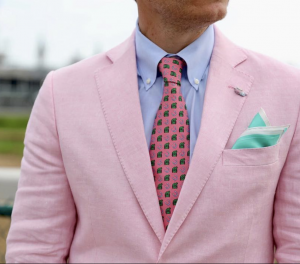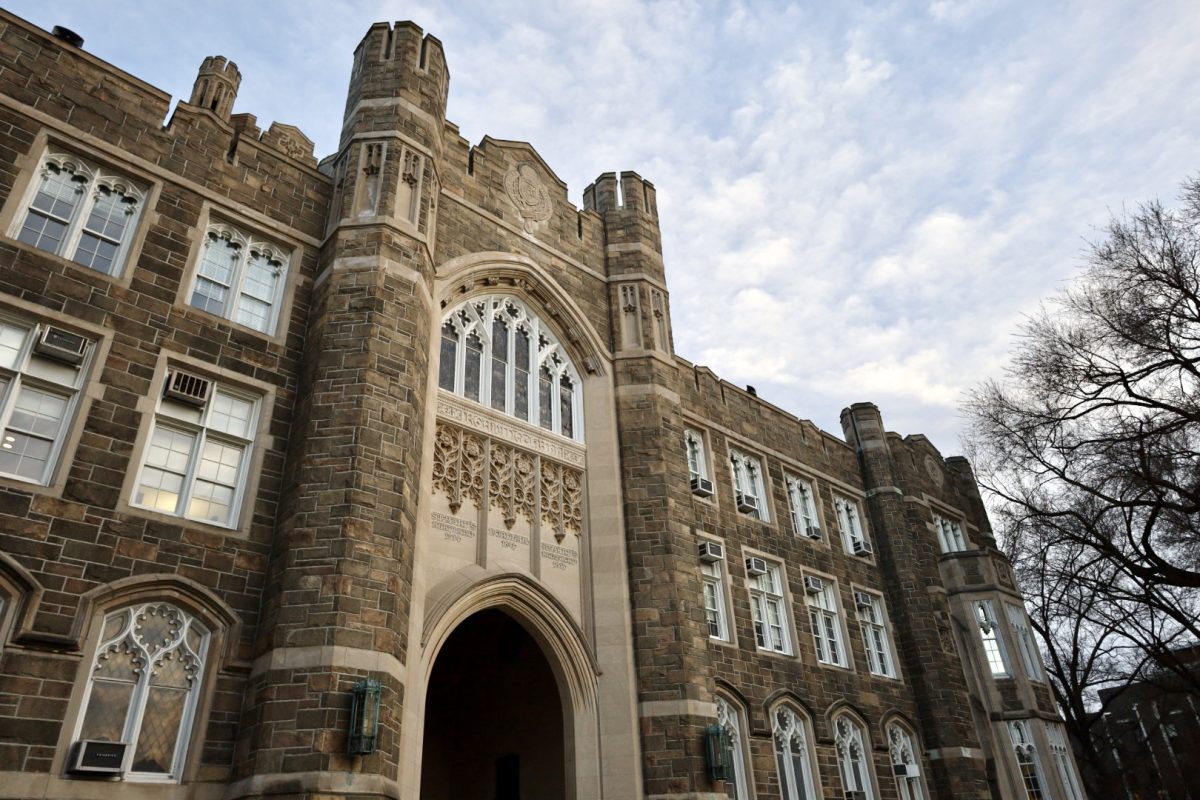By Isiah Magsino
This past summer, I found myself venturing into the world of finance. Of course, not through work, but through dates with guys I had met at bars or through Tinder. Because my own career history has only consisted of fashion journalism, I found myself completely intrigued with this aggressively sought after career.
Date after date, I was learning more about what people in finance do other than making money and flaunting said money on drinks at Mr. Purple. Despite all the less-than-exciting terms they kept throwing at me, my biggest questions regarded the cookie-cutter Midtown uniform that seemingly every young finance guy wore.
Most of us at Fordham know it. The uniform typically consists of a blue or white Oxford shirt and khaki or navy slacks, finalized with the infamous Patagonia vest whether it’s 50 or 99 degrees outside. The vest, to me at least, is the most important part of the Midtown uniform, as it is what makes this not-at-all unique combination of clothes unique to those in other fields.
Still unsure of what the uniform looks like? Midtown Manhattan turns into the finance workers’ runway, starting as early as morning rush hour at 7 a.m. and again at evening rush hour at 5 p.m.
After the informative dates in the city and time spent picking the brains of my teammates who are pursuing careers in finance, I’d like to believe that I have gained a further understanding of the many meanings behind the constricting uniform.
The midtown uniform is seen on anyone from over-confident interns to emerging managing directors at banking firms. After securing a temporary summer position, interns are eventually given a company vest and a ‘banker bag’ labeled with the company’s name, making it easy to size up other finance guys in the area during their lunch breaks at Dean and DeLuca.
Like my past experiences at magazines, every fashion practice has a set of unspoken rules. Andrew and Ethan, my teammates who recently accepted their post-graduate offers, described to me how interns should be careful with their decisions to wear the vest, as it may come off as extremely obnoxious.
The specific term used for the overly excited interns who decide to wear the vest is “finance hardo”. Andrew describes how he was reluctant to wear the vest around the office until he actually secured an offer not only for superstitious reasons, but also because he did not wish to be categorized as such.
Both “finance bros” were sure to make it clear that as one climbs the ladder within the office, the typical Patagonia vest midtown uniform is thrown out. Senior positions will always be seen wearing traditional finance attire of a suit and tie, which is another rule that applies whenever finance workers are meeting with clients outside of the company.
Aside from the actual midtown uniform, have you ever noticed or wondered why all finance guys look the same? Well, that’s because the overarching theme to the finance attire is that there is no room for uniqueness when it comes to work.
Although there has been movement towards a more “techy” uniform where employees may get away with a small dotted Hermes tie, self-expression is still seen as distracting. Clean-cut hair and clean shave faces make sure everyone looks “perfect but not obvious.” Finance workers are ultimately robots to their companies and are meant to uphold their bank’s image.
This leads into the story that I was told about a young analyst who was ridiculed by a more senior banker because they had seen them out for lunch without their suit jacket on. Apparently, small faults such as walking out of the office without a full suit on are more disrespectful to a company than wearing the tacky Patagonia vest.
What intrigues me the most about the finance uniform is that the unspoken rules and in-office practices can easily relate to my own experiences. I was not ridiculed because of a suit jacket, but because I wore a garment from Zara and repeated an outfit a month after wearing it the first time.
Regardless, it’s interesting to see how an industry that is seemingly far removed from the world of fashion, is still in some way concerned about fashion. In this case, it may be good to refer to Meryl Streep’s monologue in The Devil Wears Prada where she describes the exact same thing through the context of cerulean blue.
I hope nobody who reads this piece thinks I’m dissing the midtown uniform or those who participate in the fashion movement. If I really thought it was bad, I wouldn’t have swiped right on the guys who were originally mentioned. The dedication finance guys have to upholding their bank’s image while convincing themselves that the vest is a good look is quite admirable.
My other teammate Chris, who happens to be the “finance hardo” that Ethan and Andrew described, says, “It’s not a look. It’s a lifestyle.”







































































































































































































